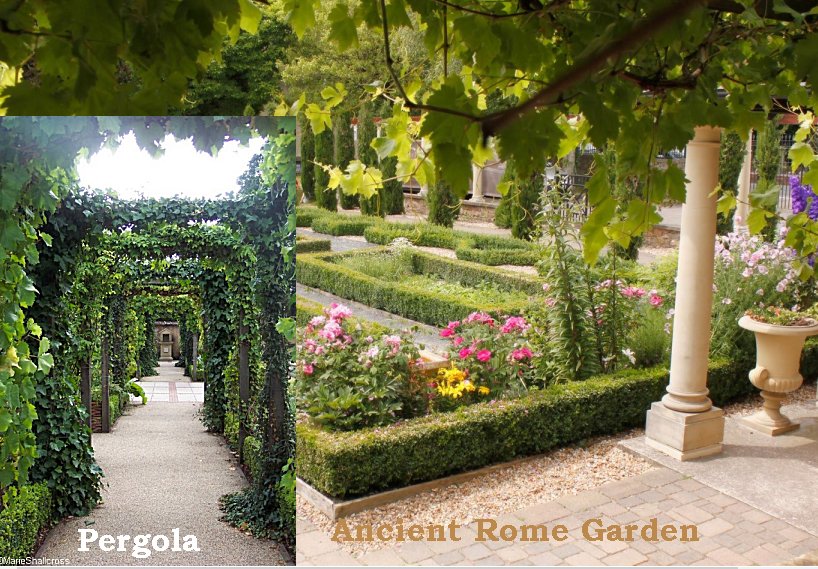How Did Ancient Romans Grow Their Gardens?
AncientPages.com - The Roman garden culture was significantly developed after 60 BC. Roman gardens were influenced by Egyptian, Persian, and Greek gardening techniques.
Each area in the garden had its special function. The owner could use his garden’s shaded path (gestation) to ride horseback or be carried by slaves.
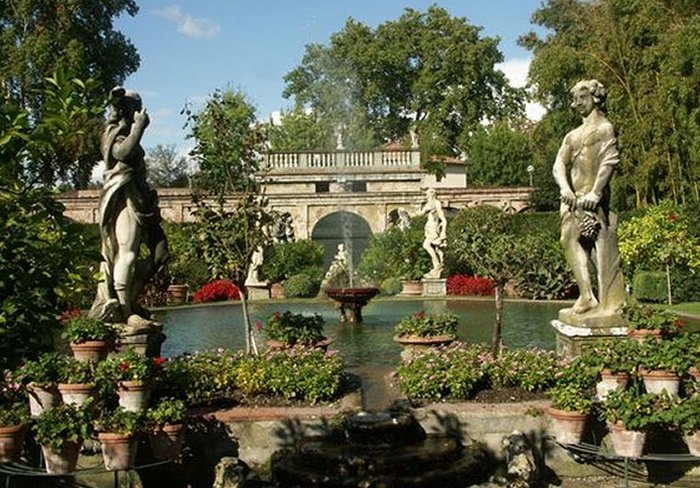
The large gardens in the city's edge were extensive parks with pavilions, statues and spring water. Source
The gardens gave flowers for wreaths that were used at parades and religious festivals in ancient Rome.
Most gardens had a pergola, a shaded walkway, passageway, or sitting area surrounded by vertical pillars covered with growing vines.
While in China pergolas were built to provide shade in temples and living spaces, in ancient Egypt they were used to provide both shade and to house figs and grapes.
The Romans used pergolas for growing vines, which were often seen climbing many pergolas and providing a green shade especially during a romantic meal for two or a larger family.
A large and lush garden gave status and prestige to the Romans. In the shady environment, the master of the house could relax or have guests, while slaves did the hard work of cultivating the soil and taking care flowers (usually roses, violets, and oleanders) and tall trees along with a variety of dwarf trees.
The large gardens in the city's edge were extensive parks with pavilions, statues and spring water. Some even had their own zoo. Rare plants housed during travel or field trains gave special status. The garden was not only used to boast. Archaeological finds show that the Romans both ate and worked in it. The women used to weave outdoors in the shade of the trees.
See also:
Why Did Ancient Romans Build So Many Straight Roads?
Ancient Roman Women Wore Bikini In 1400 B.C.
First Pay Toilets Were Invented In Ancient Rome In 74 A.D.
Families who had houses built on small pieces of land, usually could set up miniature gardens or satisfied themselves with beautiful murals, which gave the illusion of that the house was surrounded by a lush pond.
The peasants of medieval Europe considered their gardens an important source of food and herbs to cure all sorts of diseases. In the upper class, however, the garden became a fashion phenomenon during the late Middle Ages.
Garden played an important role in people’s daily life; rich people discussed all the new tricks and tips to drive out the best vegetables and the trees that gave the most fruit.
Most excavated Roman gardens show straight paths, however, serpentine or curved paths were also designed especially in larger gardens.
Pliny (AD 23–79), a Roman author, naturalist and natural philosopher, wrote that his villa at Laurentum, on the west coast of the Italian Peninsula southwest of Rome, had only one wide path that circled around a central bed, while his stadium garden in Tuscany had several different paths. (Pliny Epistulae 2).
Copyright © AncientPages.com All rights reserved. This material may not be published, broadcast, rewritten or redistributed in whole or part without the express written permission of AncientPages.com
Expand for referencesReferences:
Katharine T. von Stackelberg, The Roman Garden: Space, Sense, and Society
Bowe P. Gardens of the Roman World
More From Ancient Pages
-
 Anu: Supreme Ruler Of The Heavenly Abode In Sumerian Pantheon Of Gods
Featured Stories | Jun 7, 2018
Anu: Supreme Ruler Of The Heavenly Abode In Sumerian Pantheon Of Gods
Featured Stories | Jun 7, 2018 -
 Why Is The Oseberg Ship Burial A Great Viking Mystery?
Vikings | Jan 22, 2024
Why Is The Oseberg Ship Burial A Great Viking Mystery?
Vikings | Jan 22, 2024 -
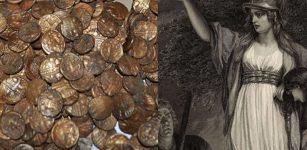 Valuable Ancient Celtic Gold Coins Found By Birdwatcher – A War Chest For Queen Boudicca’s Campaign?
Archaeology | Jan 5, 2021
Valuable Ancient Celtic Gold Coins Found By Birdwatcher – A War Chest For Queen Boudicca’s Campaign?
Archaeology | Jan 5, 2021 -
 The Untold Story Of The Great Sphinx – One Of The Greatest – Part 1
Ancient Mysteries | Aug 9, 2019
The Untold Story Of The Great Sphinx – One Of The Greatest – Part 1
Ancient Mysteries | Aug 9, 2019 -
 Remarkable Man-Made Underwater Structures Could Rewrite History Of Wisconsin
Featured Stories | Aug 22, 2018
Remarkable Man-Made Underwater Structures Could Rewrite History Of Wisconsin
Featured Stories | Aug 22, 2018 -
 Apedemak: Did The Three-Headed Lion War God Of Kush Originate From Ancient India?
Featured Stories | Jul 21, 2021
Apedemak: Did The Three-Headed Lion War God Of Kush Originate From Ancient India?
Featured Stories | Jul 21, 2021 -
 Ancient Roman Coffin Found In Leeds Revealed To The Public For The First Time
Archaeology | Apr 22, 2024
Ancient Roman Coffin Found In Leeds Revealed To The Public For The First Time
Archaeology | Apr 22, 2024 -
 Oldest Canoe Ever Discovered In Maine – It Dates To 1280-1380 A.D
Archaeology | Jun 13, 2019
Oldest Canoe Ever Discovered In Maine – It Dates To 1280-1380 A.D
Archaeology | Jun 13, 2019 -
 Megadrought That ‘Killed’ Green Sahara 4,000 Years Ago Crippled Southeast Asia’s Human Settlements
News | Aug 26, 2020
Megadrought That ‘Killed’ Green Sahara 4,000 Years Ago Crippled Southeast Asia’s Human Settlements
News | Aug 26, 2020 -
 Loss Of Rainforests, Grasslands In Southeast Asia Caused Extinction Of Megafauna And Ancient Humans
Archaeology | Oct 10, 2020
Loss Of Rainforests, Grasslands In Southeast Asia Caused Extinction Of Megafauna And Ancient Humans
Archaeology | Oct 10, 2020 -
 3,000-Year-Old History Of Tea: World’s Second Most-Consumed Drink After Clean Water
Ancient Traditions And Customs | May 10, 2019
3,000-Year-Old History Of Tea: World’s Second Most-Consumed Drink After Clean Water
Ancient Traditions And Customs | May 10, 2019 -
 Nimerigar: Mythological Race Of Little People Living In Wyoming
Featured Stories | Jun 7, 2017
Nimerigar: Mythological Race Of Little People Living In Wyoming
Featured Stories | Jun 7, 2017 -
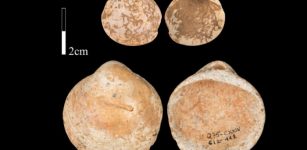 Perforated Shells Were Used By Humans 120,000 Years Ago
Archaeology | Jul 10, 2020
Perforated Shells Were Used By Humans 120,000 Years Ago
Archaeology | Jul 10, 2020 -
 Takshashila: Renowned Learning Center That Attracted Buddhist Masters, Disciples And Students Of The World
Featured Stories | Jul 23, 2016
Takshashila: Renowned Learning Center That Attracted Buddhist Masters, Disciples And Students Of The World
Featured Stories | Jul 23, 2016 -
 Does A Baffling Artifact Offer Evidence Of Ancient Extraterrestrial Visitation In New Zealand? – Experts Investigate – Part 2
Ancient Mysteries | Jul 23, 2020
Does A Baffling Artifact Offer Evidence Of Ancient Extraterrestrial Visitation In New Zealand? – Experts Investigate – Part 2
Ancient Mysteries | Jul 23, 2020 -
 Rare Medieval Seal Matrix Found By 10-Year-Old Boy In UK
Artifacts | Apr 5, 2022
Rare Medieval Seal Matrix Found By 10-Year-Old Boy In UK
Artifacts | Apr 5, 2022 -
 On This Day In History: Joan Of Arc Enters Orleans, The City Besieged By The English – On Apr 29, 1429
News | Apr 29, 2016
On This Day In History: Joan Of Arc Enters Orleans, The City Besieged By The English – On Apr 29, 1429
News | Apr 29, 2016 -
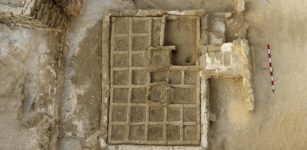 4,000-Year-Old Funerary Garden Found In Luxor, Egypt
Archaeology | May 9, 2017
4,000-Year-Old Funerary Garden Found In Luxor, Egypt
Archaeology | May 9, 2017 -
 Roman Consuls Seized Power Through Intimidation, Bribery And Show Business
Ancient History Facts | Mar 4, 2025
Roman Consuls Seized Power Through Intimidation, Bribery And Show Business
Ancient History Facts | Mar 4, 2025 -
 What Can New Method Radiocarbon 3.0 Reveal About The Interaction Between Homo Sapiens And Neanderthals?
Archaeology | Mar 29, 2023
What Can New Method Radiocarbon 3.0 Reveal About The Interaction Between Homo Sapiens And Neanderthals?
Archaeology | Mar 29, 2023

